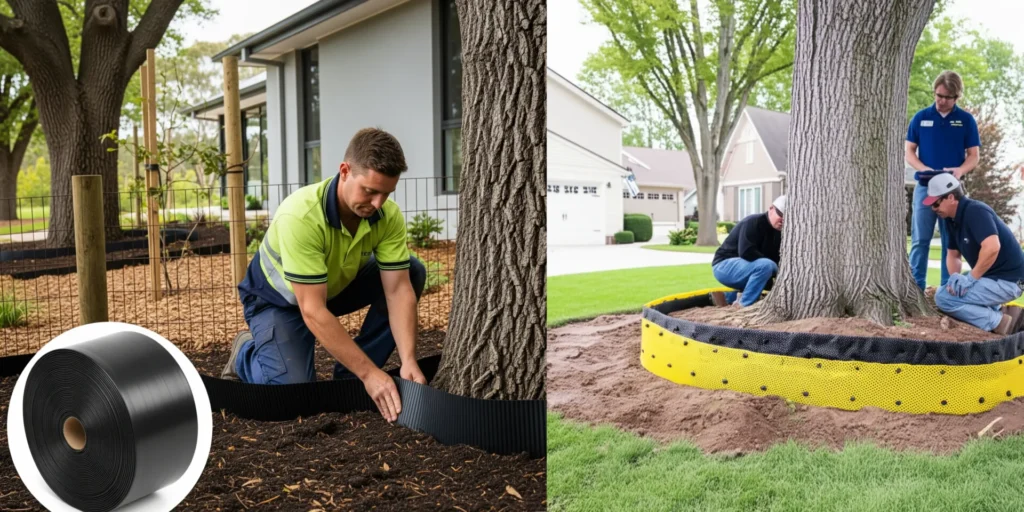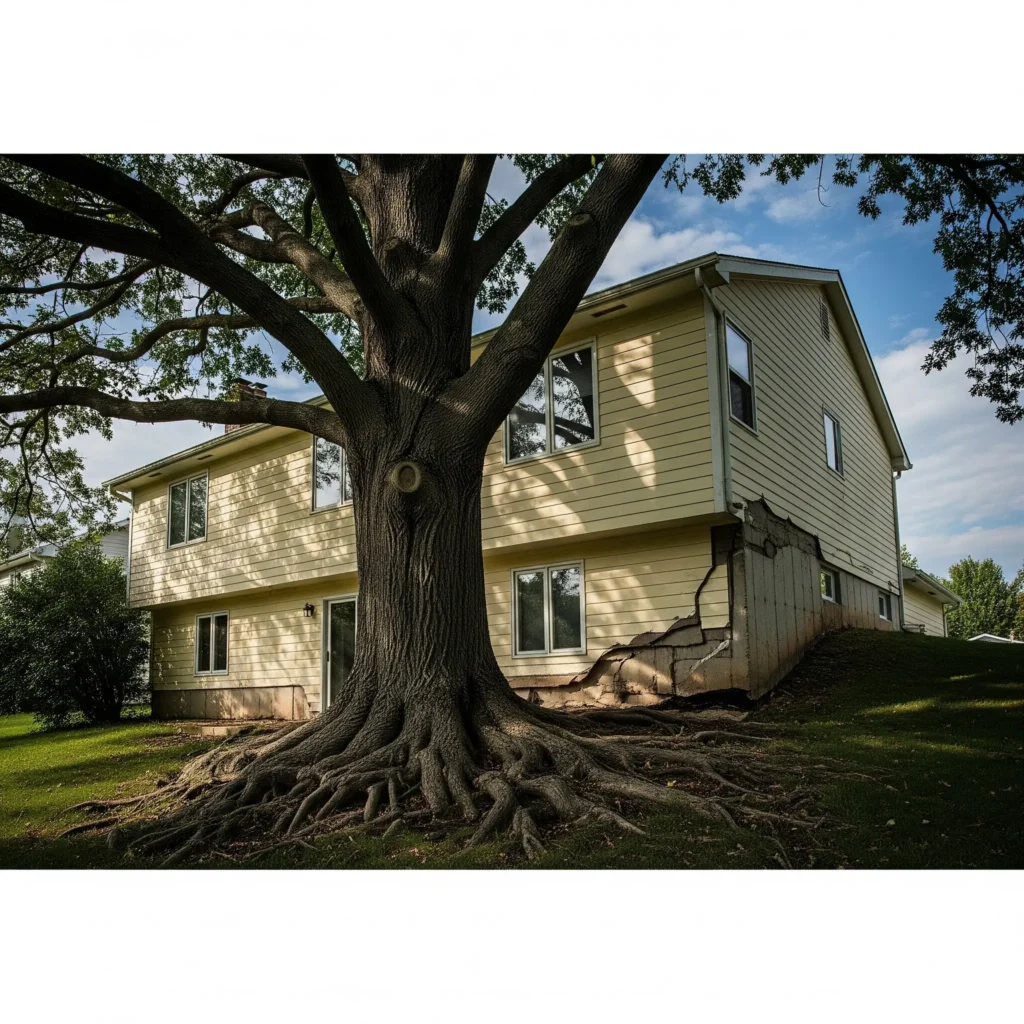Roots Can Wreck Foundations Here’s How to Stop It
When most people think about threats to their home’s foundation, they imagine things like floods, earthquakes, or poor construction. But one of the most common and often overlooked culprits is growing right in your yard: tree roots.
You might like: Protect Your Foundation Naturally: The Benefits of Bio Root Barriers
Tree roots can cause serious foundation problems by disturbing the soil beneath your home, cracking concrete, and even infiltrating plumbing systems. The good news? There’s a proven solution: bio root barriers.
To dig deeper (pun intended), we sat down with a foundation expert with over 20 years of experience in soil stabilization and structural protection. In this extended conversation, we explore when and why bio root barriers are recommended, how they’re installed, and what every homeowner needs to know to protect their property.

Section 1: What Are Bio Root Barriers, Really?
Q: Let’s start with the basics. What exactly is a bio root barrier?
Expert: A bio root barrier is a specially engineered system designed to block or redirect the growth of tree and plant roots away from structures like house foundations, driveways, sidewalks, and underground utilities. Unlike solid plastic or metal barriers, many bio barriers use environmentally safe herbicides, geotextiles, or naturally derived growth inhibitors to stop root tips from penetrating specific zones.
There are two main types:
Physical root barriers (plastic panels, metal sheets)
Bio root barriers (contain slow-release herbicides or root inhibitors)
We prefer bio barriers because they’re less intrusive to the environment and can be customized to the type of tree and soil you’re working with.
Q: What makes bio barriers different from traditional root barriers?
Expert: Great question. Traditional root barriers are usually rigid and simply block roots mechanically. But roots are persistent they’ll grow around or under those barriers over time. Bio barriers, on the other hand, modify the growth behavior of the roots. They use a slow-release system that creates a “no-go zone” without killing the tree.
Think of it as a long-term traffic detour for roots. It protects your property without harming the tree’s health or the surrounding ecosystem.

Section 2: When Experts Recommend Bio Root Barriers
Q: What are the top signs that a homeowner might need a root barrier?
Expert: We look for a few key indicators:
Large trees planted close to the home – Especially within 10-20 feet of the foundation
Visible foundation cracks – Horizontal or stair-step cracks can signal root-related movement
Soil shifting or heaving – Especially in clay-rich areas
Uneven floors or stuck doors/windows
Frequent plumbing problems – Roots often enter cracked sewer lines
Recurring foundation repairs – If you’ve repaired cracks more than once, it may be time to stop the source
Another important factor is planning ahead. If a homeowner is building a new home or planting new trees near the structure, that’s the perfect time to consider installing a barrier.
Q: Can bio root barriers be installed at any time of year?
Expert: Yes, but the best time is during moderate weather spring or fall. That’s when the soil is easier to work with and root activity is lower. But in emergency cases—like when tree roots are causing immediate damage—we can install them year-round. In Texas, for example, we often work around unpredictable rain or heat.
Section 3: Real-World Examples and Case Studies
Case Study #1: Saving a Historic Home
Expert: We had a customer with a century-old home in Houston’s Heights area. They were dealing with constant foundation cracks and had already invested in multiple patch jobs. Turns out, a large oak tree was planted just 8 feet from the house in the 1950s.
We installed a bio barrier between the tree and the foundation. Within a year, foundation movement stabilized, and they haven’t had a single crack since. Plus, the tree is still thriving.
Case Study #2: Plumbing Rescue in the Suburbs
Expert: Another case involved a suburban home with a beautiful line of magnolia trees near the street. They kept having sewer backups. A camera inspection revealed that tree roots had broken into the main sewer line. After clearing the line, we installed a bio barrier along the sewer trench to prevent roots from re-entering.
Three years later no issues. The customer saved thousands by avoiding repeat plumbing work.
Section 4: How Bio Root Barriers Work (and What They’re Made Of)
Q: What materials are used in bio root barriers?
Expert: Bio barriers often contain geotextile fabrics infused with a slow-release herbicide called trifluralin. This compound disrupts root tip growth when it comes into contact with the barrier. It’s used in very small amounts and stays locked in the fabric, so it doesn’t leach into the soil or water.
Other systems use natural root inhibitors derived from essential oils or organic acids. These are more eco-conscious but may not last as long—so we balance each project based on goals, tree type, and soil conditions.
Q: Are they environmentally friendly?
Expert: Yes. That’s one of the reasons we recommend bio barriers more than solid plastic ones. The herbicide is non-systemic, meaning it only affects the part of the root that touches it—it doesn’t travel through the tree. Plus, it stays localized, so it won’t harm nearby plants or groundwater.
Section 5: Installation Process—What Homeowners Can Expect
Q: What does installation involve?
Expert: It starts with a property inspection. We identify risk zones, tree locations, and existing damage. Then we:
Dig a trench—usually 12-24 inches deep
Lay the barrier fabric or panels
Backfill the soil and compact it
Re-grade and clean up the area
The whole process typically takes 1–2 days, depending on soil and tree density.
Q: Is the installation messy or disruptive?
Expert: Not really. We do our best to minimize disruption. Homeowners often expect a huge excavation, but most of the time we’re using narrow trenches. Landscaped areas might be disturbed slightly, but we always restore them after installation.
Section 6: Common Misconceptions About Root Barriers
Q: Are there any myths or misunderstandings you hear often?
Expert: Definitely! A few common ones:
“Roots can break through concrete.”
Not directly. Roots can displace or dry the soil under concrete, causing it to shift and crack.“You only need a barrier if you see damage.”
False. By the time you see damage, it’s often too late. Preventative installation is way cheaper than repairs.“Barriers will kill my tree.”
Not if installed properly. The barrier redirects roots without starving or injuring the tree.
Section 7: Cost, Value, and Long-Term ROI
Q: How much does a bio barrier cost?
Expert: It depends on the length and depth of the trench, soil conditions, and materials used. Here’s a rough guide:
Small residential job: $500–$1,500
Larger property or full perimeter: $2,000–$4,000
High-complexity commercial sites: $5,000+
Compared to foundation repair ($10,000–$30,000) or tree removal ($2,000+), bio barriers are a smart investment.
Q: How long do they last?
Expert: Most barriers last 10–15 years or more. Some fabrics with herbicides maintain effectiveness for over 20 years in ideal conditions. We always recommend annual foundation inspections to make sure the system is working.
Section 8: Landscaping, Tree Selection, and Prevention Tips
Q: Can homeowners prevent root damage without a barrier?
Expert: There are a few strategies:
Choose less aggressive trees (e.g., crepe myrtle, dogwood)
Plant trees at least 20–30 feet away from the home
Water the foundation consistently to prevent soil contraction
Avoid over-irrigation near the foundation
But in many cases, especially with existing mature trees, a bio barrier is your best protection.
Conclusion: Protect Now, Save Later
Tree roots might be quiet, but their effects on your foundation can be loud and expensive. Whether you’re seeing early warning signs or planning ahead, a bio root barrier is a simple, eco-conscious solution that protects your home for the long haul.
As our expert shared, being proactive pays off. Don’t wait until you see cracks or hear gurgling pipes—address the root of the problem before it grows.
Need Help? Let’s Talk
At R.L. NELSON Foundation Solutions, we specialize in customized root barrier systems that protect foundations and landscapes across Texas. If you’re unsure whether a bio root barrier is right for your home, we offer free inspections and honest advice.
📞 Call us today at 281-420-1739
🌐 Or request a consultation online




